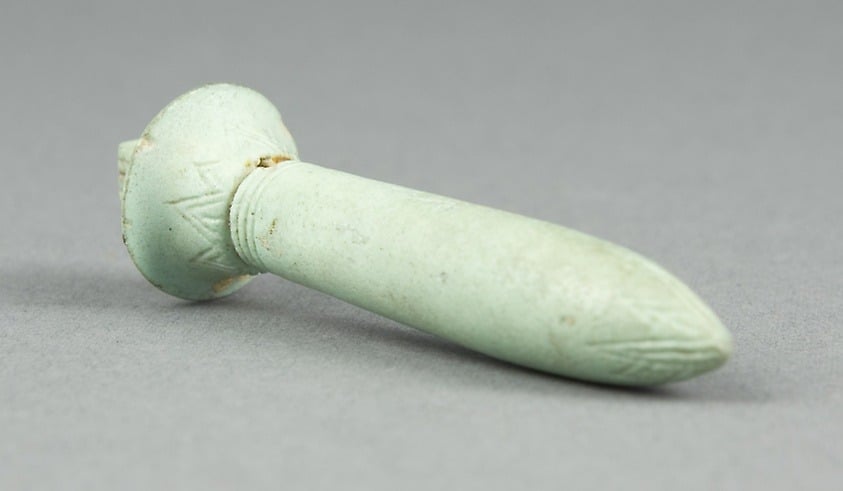Amulet of a Papyrus Column, Wadj

The Wadj amulet (also known as the papyrus column or scepter) is an Ancient Egyptian amulet in the shape of a papyrus stem. These amulets were made out of turquoise feldspar, as is indicated in the Book of the Dead.
This faience amulet represents a papyrus column. Incised lines on the umbel delineate the leaves. Today the papyrus plant is best known as the material from which the ancient Egyptians produced the paper-like writing material that we call papyrus.
For the ancient Egyptians, however, the plant, known to them by the name of wadj, had a much wider value, being intricately linked with concepts of growth and rejuvenation.
As a result of these potent connections, as well as the plant’s strong associations with Lower (northern) Egypt for which it was the iconic plant, symbolism incorporating the shape of the papyrus plant can often be found in other contexts, such as in papyriform columns made of stone utilized as architectural elements, or as scepters carried by deities.
Different materials could be used to produce them, but the common element seems to be the color green, symbolically linked to regeneration and rebirth. The word Wadj’ or ‘Uadj, in fact, not only designates the papyrus plant, but can also be translated as “being green, greenish”. The papyrus plant itself, growing close to the water, meant “new life”, besides being the symbol of Lower Egypt.
Hits: 24





